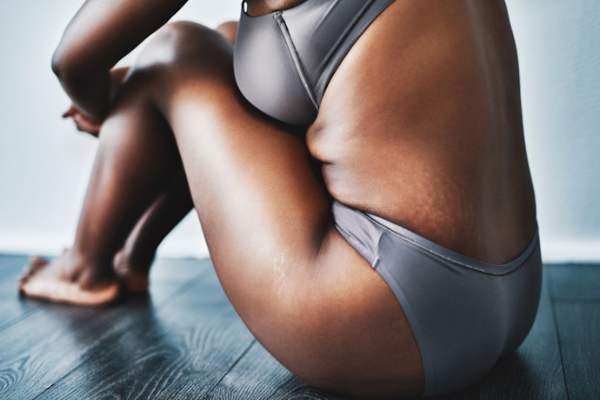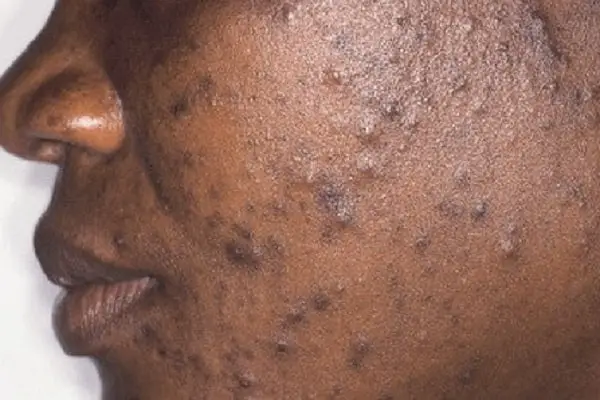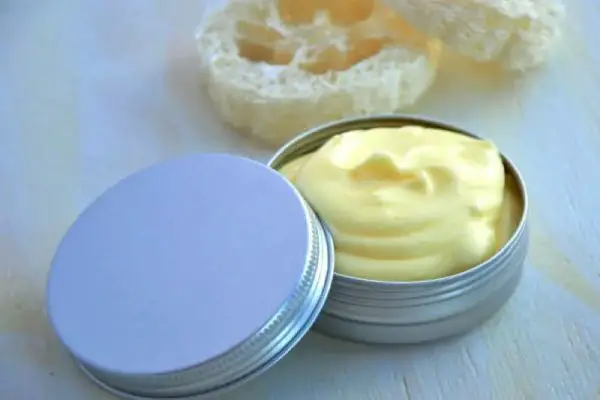Stretch Marks: What are they, causes, treatment and more
Stretch marks are marks caused by the stretching of a certain area of the skin. Very common in areas such as the buttocks and thighs, these tears in the dermis can be caused by several factors, whether dietary, hormonal, genetic or others.
If you are interested in better understanding this phenomenon, continue reading this article!
Here, you will find answers to the most common questions about stretch marks, such as what they are, their types and their causes, as well as the best ways to prevent and treat this problem. Check out!

What Are Stretch Marks?
Stretch marks are marks caused by distension of the dermis. This distension is, more specifically, a rupture of the collagen and elastin fibers, which are responsible for ensuring the firmness, support and elasticity of the skin.
The rupture of these fibers generates grooves that are a bit like scars. Its appearance is that of long, linear and, generally, parallel marks. The most recent ones tend to be reddish or purplish, while the oldest ones have a white hue.
The most common is the appearance of stretch marks on the thighs and buttocks, but this can vary. During pregnancy, stretch marks appear on the abdomen frequently. In men, the back of the trunk is the region most commonly affected by stretch marks.
What Are the Types of Stretch Marks?
Stretch marks can be red or white. These are, in reality, two different phases for the same problem. Below, check out an explanation of each type of stretch mark and better understand what they are.
- Red stretch marks: with shades that vary between pinkish, reddish and purplish, these are the most recent stretch marks; They are still in an inflammatory phase, due to the rupture of blood capillaries.
- White stretch marks: these are the scars of what were previously red stretch marks; Once the inflammatory process is complete, the stretch mark acquires this whitish color because the area no longer receives blood circulation.
These are the types. To summarize, we can say that the difference between red and white stretch marks is time, the first being the initial phase of the dermis breaking and the second, its healing. This makes it easier to understand what stage a patient’s stretch marks are at.
What Causes Stretch Marks?
Stretch marks are caused by stretching of the skin, which triggers inflammation and, subsequently, atrophy of the affected skin region. This phenomenon can be caused by several factors. In the list below, check out the main causes for the appearance of stretch marks.
- Genetic predisposition
- Skin stretching during pregnancy
- Hormonal changes, usually in adolescence
- Accelerated growth during puberty
- Sudden gain of weight or muscle mass
- Long-term use of corticosteroids in high doses
In other words, the factors that give rise to the phenomenon are diverse, but we can notice a pattern in them.
All of these causes generate physical changes that stretch the skin and, as a result, create marks called stretch marks. Seeking help from dermatologists is the best option to discover the cause in each patient.
Why Do Stretch Marks Itch?
Stretch marks itch because this is the sensation caused by the tearing of skin fibers. The process that forms stretch marks is a change in the main component of the skin, collagen. Modifying this element changes the entire structure of the skin in the affected region, causing itching.
With this, we can debunk a myth regarding this subject. Many people believe that scratching can cause stretch marks. In fact, itching is a sign that the skin is undergoing stretching, which will subsequently show its marks (stretch marks).
Stretch Mark Treatments: What to Do to Reduce and Avoid?
Stretch marks are unwanted and feared by many. The ideal is to try to prevent them from appearing. However, if you already have stretch marks, don’t worry! There are several treatments that can mitigate the effects of stretch marks and even eliminate them. Continue reading to find out more about it!
How to Prevent Stretch Marks?
There are some measures that can be taken by those who want to reduce the chances of having stretch marks. Although it is not possible to completely control this phenomenon, the following tips can help prevent stretch marks from appearing.
- Hydration: you must combine the correct consumption of water (on average, 2 L per day) and the application of dermocosmetics recommended by a dermatologist specifically to hydrate the skin.
- Physical exercise: regular physical activity is also useful for preventing stretch marks, especially by reducing the chances of weight gain.
- Healthy eating: avoiding excess fats, sweets and salt and giving preference to diets rich in natural foods, such as fruits, vegetables and legumes.
In other words, adopting healthy lifestyle habits goes a long way toward reducing the chances of body changes that could stretch the skin and thus cause stretch marks. However, adhering to these measures does not guarantee that stretch marks will not appear, as this situation may involve several factors.
How to Treat Stretch Marks?
But, pay attention! Even if stretch marks are not caused by itching, scratching can further damage the area of skin that is being stretched. For this reason, experts recommend that, instead of scratching, patients apply moisturizing cream or mineral oil to the itchy area.
To treat stretch marks, it is possible to opt for therapies that renew the skin and increase collagen production, reversing the damage caused by stretching. In the following list, see the best treatments for stretch marks and understand how they work.
- Topical medications: the most commonly used are creams with retinoic acid or tretinoin; This treatment is contraindicated for pregnant women and requires a medical prescription.
- Chemical peeling: application of acids to exfoliate the skin, stimulating its recovery; option contraindicated in pregnancy.
- Fractional laser and intense pulsed light: useful for recent or old stretch marks, the treatment causes controlled damage that stimulates skin cells to produce collagen; not recommended during pregnancy.
- Fractional CO2 laser: high-precision treatment, useful for stimulating collagen production, with good results on recent stretch marks and good attenuation of old stretch marks.
- Microneedling radiofrequency: treatment that causes a controlled inflammatory process, reducing stretch marks through the contraction of collagen and elastin fibers.
- Microdermabrasion: physical peeling that scrapes the surface layer of the skin, stimulating cell renewal and collagen production.
- Microneedling: also called Percutaneous Needle Induction of Collagen (IPCA), the treatment causes the skin to undergo a cell renewal process, in addition to stimulating collagen production.
- Subcision: surgical procedure, a little more invasive, which consists of delicate ruptures in the fibrosis beams in the dermis, inducing the skin to the healing process.
These treatments tend to be more efficient when carried out in the initial phase of stretch marks, that is, in their reddened phase (during skin inflammation). To identify the most effective treatment for each case, it is necessary to consult a doctor specialized in dermatology.
Conclusion
Another of our articles ends here. In it, you were able to learn what stretch marks are, knowing their types and their most common causes. You could also check out the best ways to prevent and treat stretch marks, as well as other interesting facts about the subject.
Did our content help you? If the answer is yes, we suggest you share this article! This will allow other interested people to have easy and reliable access to key information about stretch marks.






![How to Make Perfume in Nigeria 2022 [Step-By-Step Guide] 8 How to Make Perfume in Nigeria [Step-By-Step Guide]](https://naijaxtremefashion.com/wp-content/uploads/2022/05/how-to-make-perfume-in-nigeria-img_1-min.jpg)
Yo, been playing around on win92. It’s got some interesting stuff going on. Might be worth a look if you’re bored: win92.